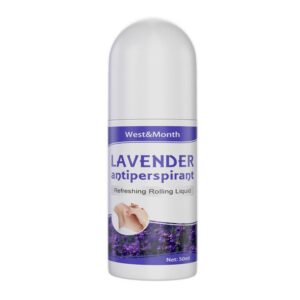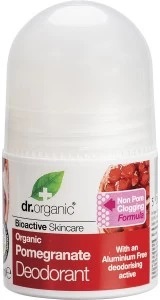Fragrances and Deodorants
The Scent of Success: Unveiling the Science Behind Fragrances and Deodorants
 Unlock the mystique behind the power of fragrances and deodorants as we delve into the fascinating science that lies within. Have you ever wondered how a subtle mix of scents can captivate our senses, trigger memories, and even influence our behaviour? Prepare to be ensnared by the allure of the olfactory world, where chemistry and artistry intertwine to create invisible masterpieces.
Unlock the mystique behind the power of fragrances and deodorants as we delve into the fascinating science that lies within. Have you ever wondered how a subtle mix of scents can captivate our senses, trigger memories, and even influence our behaviour? Prepare to be ensnared by the allure of the olfactory world, where chemistry and artistry intertwine to create invisible masterpieces.
In this article, we will demystify the magic of fragrances and deodorants, exploring the intricate relationship between our sense of smell and our emotions. Discover how the delicate balance of volatile compounds can invoke feelings of happiness, tranquillity, or even nostalgia. From the floral notes that uplift our spirits to the musky undertones that exude confidence, you’ll unravel the secrets behind the scents that define our identities.
Join us on an olfactory journey as we unravel the mysteries behind the science of fragrances and deodorants. From the molecular level to the complexity of our sense of smell, we will explore the evolution of perfumery and the cutting-edge research that shapes the industry today. Embrace the aroma of knowledge and unlock the door to a world where scent reigns supreme. So, take a deep breath, and let the scent of success enthral your senses.
The Science behind Scent Perception
Scent perception is the process by which we detect and identify odours in our environment. It involves a complex interaction of sensory, cognitive, and emotional factors that shape our experience of smell. In this paragraph, we will briefly outline the main steps and components of scent perception, from the molecular level to the brain.
The first step of scent perception is the stimulation of olfactory receptors, which are specialized neurons located in the nasal cavity. These receptors bind to odour molecules that enter the nose through inhalation or diffusion. Each receptor can recognize a specific range of odour molecules, and each odour molecule can activate multiple receptors. The combination of receptor activation patterns creates a unique olfactory code for each odour.
The second step of scent perception is the transmission of olfactory signals to the brain. The olfactory receptors send their signals to the olfactory bulb, which is a structure at the base of the brain that acts as a relay station and a filter. The olfactory bulb processes the signals and sends them to various brain regions, such as the piriform cortex, the amygdala, and the hippocampus. These regions are involved in different aspects of scent perception, such as odour identification, emotional response, and memory formation.
The third step of scent perception is the interpretation and evaluation of olfactory information. This step depends on several factors, such as prior knowledge, expectations, context, mood, and personality. For example, the same odour can be perceived differently depending on whether it is associated with a pleasant or unpleasant memory, or whether it is presented in a familiar or unfamiliar setting. Moreover, individual differences in genetic makeup, age, gender, and health can also influence how we perceive scents.
Scent perception is a fascinating and dynamic phenomenon that reveals a lot about our biology and psychology. By understanding how we smell, we can better appreciate the role of scents in our lives and in our society.
How Fragrances and Deodorants Affect our Mood and Emotions
 Fragrances and deodorants are not just cosmetic products that enhance our appearance and hygiene. They also have a significant impact on our mood and emotions, as they can trigger memories, associations, and preferences that affect how we feel and behave. In this article, we will explore some of the ways that fragrances and deodorants can influence our psychological state, and how we can use them to improve our well-being.
Fragrances and deodorants are not just cosmetic products that enhance our appearance and hygiene. They also have a significant impact on our mood and emotions, as they can trigger memories, associations, and preferences that affect how we feel and behave. In this article, we will explore some of the ways that fragrances and deodorants can influence our psychological state, and how we can use them to improve our well-being.
One of the main ways that fragrances and deodorants affect our mood and emotions is through the sense of smell, which is closely linked to the limbic system, the part of the brain that regulates emotions, memory, and motivation. Smell is one of the most primitive and powerful senses, as it can bypass conscious awareness and directly evoke emotional responses. For example, smelling a familiar perfume or cologne can remind us of a loved one or a pleasant experience, while smelling a rotten food or a foul odour can trigger disgust or fear.
Another way that fragrances and deodorants affect our mood and emotions is through the social and cultural meanings that they convey. Different scents can signal different messages, such as attractiveness, status, personality, or mood. For instance, floral or fruity scents can suggest femininity, sweetness, or romance, while woody or spicy scents can imply masculinity, strength, or adventure. Similarly, fresh or clean scents can indicate hygiene, health, or professionalism, while musky or exotic scents can imply sensuality, mystery, or sophistication. These meanings are not fixed or universal, but rather depend on the context and the individual’s perception.
Fragrances and deodorants can also affect our mood and emotions by influencing our self-image and self-esteem. How we smell can affect how we feel about ourselves, as well as how others perceive us. For example, wearing a fragrance or deodorant that we like can boost our confidence and make us feel more attractive, while wearing a scent that we dislike or that clashes with our identity can lower our self-esteem and make us feel uncomfortable. Moreover, fragrances and deodorants can also affect our behaviour and performance, as they can enhance our mood, motivation, concentration, creativity, or relaxation.
Given the powerful effects that fragrances and deodorants have on our mood and emotions, it is important to choose them wisely and use them appropriately. Here are some tips to help you make the most of your scents:
- Experiment with different fragrances and deodorants until you find the ones that suit your personality, preferences, and goals.
- Match your scent to the occasion, such as using a light or refreshing scent for daytime or work, and a heavier or more seductive scent for evening or romance.
- Apply your fragrance or deodorant sparingly and discreetly, as too much scent can be overwhelming or offensive to others.
- Change your scent periodically to avoid olfactory fatigue or boredom.
- Store your fragrances and deodorants in a cool and dark place to preserve their quality and longevity.
Fragrances and deodorants are more than just products that make us smell good. They are also tools that can help us shape our mood and emotions, as well as influence how others perceive us. By choosing and using them wisely, we can enhance our well-being and express ourselves in unique ways.
The Psychology of Fragrance Marketing
Fragrance marketing is the use of scent to influence consumer behaviour and create positive associations with a brand, product, or service. Fragrance marketing can be applied in various settings, such as retail stores, hotels, restaurants, cinemas, and online platforms. The psychology behind fragrance marketing is based on the idea that scent can evoke emotions, memories, and moods, and thus affect consumer decision-making and satisfaction.
Some of the benefits of fragrance marketing are:
- It can enhance the brand identity and differentiate it from competitors.
- It can create a pleasant and memorable customer experience and increase loyalty and retention.
- It can stimulate the senses and increase arousal, attention, and curiosity.
- It can influence the perception of quality, value, and price.
- It can trigger impulse buying and increase sales.
However, fragrance marketing also has some challenges and limitations, such as:
- It can be costly and difficult to implement and maintain.
- It can be intrusive and annoying for some customers who may prefer a scent-free environment or have allergies or sensitivities.
- It can be inconsistent and ineffective if the scent does not match the brand image, product category, or customer expectations.
- It can be unethical and manipulative if the scent is used to deceive or coerce customers.
Therefore, fragrance marketing requires careful planning, testing, and evaluation to ensure that it is appropriate, effective, and ethical for the target market and context.
Choosing the Right Fragrance or Deodorant for different Occasions
Choosing the right fragrance or deodorant for different occasions can be a challenging task. There are many factors to consider, such as your personal preference, the season, the time of day, the mood, the dress code, and the impression you want to make. Here are some tips to help you make the best choice.
- For casual occasions, such as going to the gym, running errands, or hanging out with friends, you can opt for a light and fresh fragrance or deodorant that is not too overpowering or complex. You can choose citrus, floral, or aquatic notes that are refreshing and energizing. Some examples are lemon, bergamot, orange blossom, jasmine, rose, mint, cucumber, or sea salt.
- For formal occasions, such as a business meeting, a wedding, or a dinner party, you can go for a more sophisticated and elegant fragrance or deodorant that is not too loud or playful. You can choose woody, spicy, or oriental notes that are warm and refined. Some examples are sandalwood, cedar, patchouli, vanilla, amber, musk, cinnamon, cardamom, or saffron.
- For romantic occasions, such as a date night, an anniversary, or a Valentine’s Day celebration, you can choose a more sensual and seductive fragrance or deodorant that is not too subtle or boring. You can choose fruity, gourmand, or floral notes that are sweet and enticing. Some examples are apple, peach, cherry, chocolate, caramel, honey, rose, jasmine, or orchid.
The Role of Fragrances and Deodorants in Personal Branding
 Personal branding is the process of creating and communicating a distinctive identity that sets one apart from others in a competitive environment. One of the aspects of personal branding that is often overlooked is the role of fragrances and deodorants in creating a positive impression and enhancing one’s image. Fragrances and deodorants can convey a variety of messages, such as confidence, professionalism, attractiveness, personality, mood, and style. They can also influence how others perceive and remember one, as well as how one feels about oneself.
Personal branding is the process of creating and communicating a distinctive identity that sets one apart from others in a competitive environment. One of the aspects of personal branding that is often overlooked is the role of fragrances and deodorants in creating a positive impression and enhancing one’s image. Fragrances and deodorants can convey a variety of messages, such as confidence, professionalism, attractiveness, personality, mood, and style. They can also influence how others perceive and remember one, as well as how one feels about oneself.
Fragrances and deodorants are not just cosmetic products, but powerful tools of non-verbal communication that can affect one’s personal and professional success. According to a study by the Smell and Taste Research Foundation, people who wear fragrances are rated as more attractive, intelligent, sociable, and competent than those who do not. Another study by the Monell Chemical Senses Center found that people who wear deodorants are perceived as more trustworthy, cooperative, and friendly than those who do not. Moreover, fragrances and deodorants can also enhance one’s self-esteem, mood, and performance. A study by the University of Liverpool showed that women who wore a floral fragrance performed better on a cognitive test than those who wore no fragrance or a neutral fragrance.
However, choosing the right fragrance and deodorant for one’s personal branding is not an easy task. There are many factors to consider, such as the occasion, the audience, the season, the time of day, the personal preference, and the compatibility with one’s body chemistry. Furthermore, one should also be aware of the potential negative effects of fragrances and deodorants, such as allergies, irritation, headaches, nausea, and social rejection. Therefore, one should use fragrances and deodorants with moderation, discretion, and respect for others.
In conclusion, fragrances and deodorants can play a significant role in personal branding, as they can influence how one is perceived and remembered by others, as well as how one feels about oneself. However, one should also be careful in selecting and applying fragrances and deodorants that suit one’s identity, goals, and context. By doing so, one can create a positive and lasting impression that can benefit one’s personal and professional life.
The Impact of Fragrances and Deodorants on Consumer Behaviour
Fragrances and deodorants are products that aim to enhance the olfactory experience of consumers, either by masking unpleasant body odours or by creating a pleasant scent that can influence their mood, emotions, and self-image. The market for fragrances and deodorants is highly competitive and dynamic, as consumers are constantly looking for new and innovative products that can satisfy their needs and preferences. In this paper, we review the literature on the impact of fragrances and deodorants on consumer behaviour, focusing on three main aspects: the psychological effects of fragrances and deodorants on consumers, the factors that influence consumer choice of fragrances and deodorants, and the implications for marketing strategies and practices. We conclude by identifying some gaps in the current research and suggesting some directions for future studies.
The Science behind long-lasting Fragrances and Deodorants
Fragrances and deodorants are products that aim to enhance or mask the natural body odour of a person. They can have different effects on the perception, mood, and behaviour of the wearer and others. But how do they work and what makes them last longer on the skin?
Fragrances are composed of volatile organic compounds (VOCs) that evaporate from the skin and create a pleasant smell. The VOCs can be derived from natural sources, such as flowers, fruits, spices, or wood, or synthesized in a laboratory. The VOCs are blended together to form a complex and unique scent that can be classified into different categories, such as floral, fruity, woody, oriental, or fresh.
Deodorants are products that prevent or reduce the growth of bacteria that cause body odour. They can contain antibacterial agents, such as alcohol, triclosan, or zinc oxide, that kill or inhibit the bacteria on the skin. They can also contain fragrances to mask the odour or neutralize it with opposite smells.
The longevity of fragrances and deodorants depends on several factors, such as the concentration, composition, and quality of the ingredients, the skin type and pH of the wearer, the temperature and humidity of the environment, and the amount and frequency of application. Generally, fragrances and deodorants last longer when they have higher concentrations of VOCs, more base notes (the heaviest and most persistent components of a fragrance), higher quality and purity of ingredients, lower skin pH and oiliness, cooler and drier climate, and more generous and regular application.
Fragrance and Deodorant Trends in the Market
The fragrance and deodorant market are expected to grow at a compound annual growth rate (CAGR) of 5.5% from 2020 to 2027, reaching a value of USD 97.5 billion by 2027, according to a report by Grand View Research. The increasing demand for personal care products, especially among the young and urban consumers, is driving the growth of this market. Some of the key trends that are shaping the fragrance and deodorant market are:
- Natural and organic ingredients: Consumers are becoming more aware of the environmental and health
 impacts of synthetic chemicals and are opting for natural and organic ingredients in their fragrances and deodorants. These ingredients are derived from plants, flowers, fruits, herbs, spices, and other natural sources and offer benefits such as soothing, moisturizing, anti-inflammatory, and antibacterial properties. Some of the popular natural and organic ingredients in the market are lavender, rose, jasmine, sandalwood, vanilla, citrus, mint, tea tree, and coconut.
impacts of synthetic chemicals and are opting for natural and organic ingredients in their fragrances and deodorants. These ingredients are derived from plants, flowers, fruits, herbs, spices, and other natural sources and offer benefits such as soothing, moisturizing, anti-inflammatory, and antibacterial properties. Some of the popular natural and organic ingredients in the market are lavender, rose, jasmine, sandalwood, vanilla, citrus, mint, tea tree, and coconut. - Personalization and customization: Consumers are looking for products that suit their individual preferences, needs, and lifestyles. They are seeking products that reflect their personality, mood, occasion, and season. Personalization and customization options allow consumers to create their own unique fragrances and deodorants by choosing from a variety of scents, bases, formats, packaging, and delivery methods. Some of the examples of personalization and customization options in the market are fragrance layering, scent mixing, scent discovery kits, subscription boxes, and online quizzes.
- Gender-neutral fragrances: The traditional boundaries between masculine and feminine fragrances are blurring as consumers are embracing gender-fluidity and diversity. Gender-neutral fragrances are designed to appeal to both men and women and feature scents that are not associated with any specific gender. These scents are usually fresh, clean, woody, spicy, or floral and can be worn by anyone regardless of their gender identity or expression. Some of the examples of gender-neutral fragrances in the market are CK One by Calvin Klein, Unisex by Calvin Klein, Black Orchid by Tom Ford, and Santal 33 by Le Labo.
Conclusion: Harnessing the Power of Scent for Success
In this article fragrances and deodorants, we have explored how scent can influence our mood, memory, performance, and well-being. We have seen how different scents can evoke different emotions, associations, and behaviours, and how we can use this knowledge to enhance our personal and professional lives. We have also learned how to choose, apply, and store scents to maximize their benefits and avoid unwanted effects. By harnessing the power of scent, we can create a more positive, productive, and enjoyable environment for ourselves and others.




